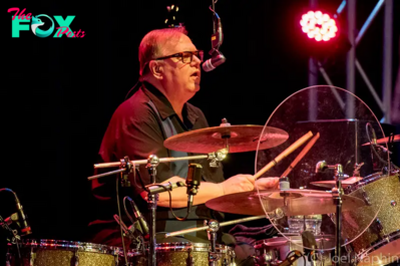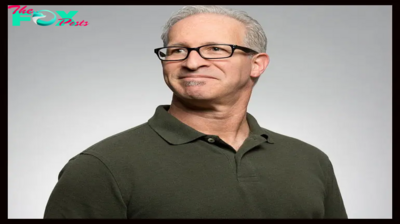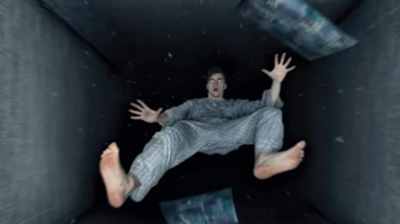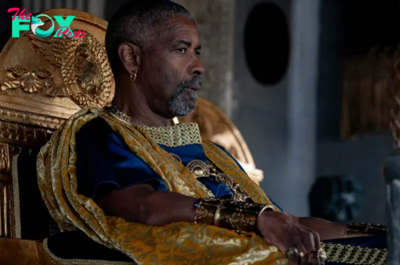Entertainment
Breaking Down the Major Changes in Lady in the Lake’s Jump From Book to TV
Warning: This post contains spoilers for eps. 1 and 2 of Apple's Lady in the Lake
In Lady in the Lake, the new show releasing on Apple TV+ on July 19, two chilling murders change the course of a woman’s life in 1960s Baltimore. The seven-episode limited series, which was adapted from author Laura Lippman’s popular 2019 thriller novel of the same name, stars Natalie Portman in her first TV role. Portman plays Madeline “Maddie” Morgenstern, a bored Jewish housewife-turned-aspiring journalist, whose obsession with the fatal disappearance of a young Jewish girl (Bianca Belle) leads her to investigate another crime—the overlooked murder of a young Black mother named Eunetta “Cleo” Johnson (Moses Ingram), whose body was found in the fountain of a park lake.
Lippman’s book was inspired by two real-life and unrelated murder cases that took place in Baltimore in 1969, an 11-year-old Jewish girl named Esther Lebowitz, who received ample media coverage and whose body was found a few days after she was reported missing, and Shirley Parker, a 35-year-old Black woman, whose body was found in Baltimore zoo’s lake fountain months after she went missing because someone had written to the local newspaper help column asking why the lights were off in the fountain. In the novel, Maddie’s ambitious—if, at times, self-absorbed—journey to becoming a journalist and forging the new life she desires is told through the perspectives of those she’s interacting with, from her landlord’s eager daughter to her sexist coworkers at the newspaper; meanwhile, Cleo’s ghost provides a haunting omniscient narration.
Read more: Lady in the Lake Casts Natalie Portman in a Strikingly Subversive ’60s Noir
The book is fundamentally a mystery, but it’s also a clear-eyed examination of the restrictive social structures at the time—for example, Maddie can’t sell her car without her estranged husband’s signature and resorts to committing insurance fraud with her wedding ring, while Cleo is subject to constant racial discrimination, even in death, when her murder is deemed “not important” enough for Maddie’s newspaper to report on. And though they come from vastly different worlds and backgrounds, what Maddie and Cleo do share is a desire to live life on their own terms, free from the expectations and mores of others.
For director and writer Alma Har’el, who also executive produced the series, the parallel lives of Maddie and Cleo provided a compelling glimpse into the swiftly changing landscape of Baltimore, and more largely, society during this time.
“What really spoke to me was Maddie and Cleo and the idea of a murder mystery that has so many twists and turns, but at the same time, tells the story of the city and its Politics and the social aspects of the time,” she tells TIME. “I felt it was like a double-edged sword in a way—there's a whodunnit, who killed these women, but also what’s within ourselves that we have to investigate and figure out to not become the people that we don't want to be.”
Here’s what to know about Lady in the Lake and the book that inspired it.
What are the biggest changes from the book to the screen?
Though Har’el and the other writers who worked on Lady in the Lake rooted the show in the novel, they wanted to give a wider look at the world of 1960s Baltimore in the adaptation, which meant making some key changes.
The largest of these changes may be the expansion of the character of Cleo Johnson, the titular “Lady in the Lake,” who has a more richly developed personal life and backstory in the show. Likewise, Maddie’s Jewish heritage and her inner life (a major part of her decision to leave her marriage and pursue a career) are explored in more depth on-screen, as are the secrets in her past. For Har’el, showing the role that both of these communities played in the development of Baltimore during the time was an integral part of the story.
Read more: A Crime Writer Tackles the Sinister Side of Baltimore
“The story deals with two murders that happened and Maddie trying to solve these murders. Her connection to the whole city and to Cleo specifically, is what informs the tension of the whole show,” Har’el says. “Both of them as characters show us a picture of Baltimore at the time. There's something about the relationship between Black folks and Jewish people, who both suffered a lot of struggle, that has taken a turn in the 1960s. I very much wanted to bring to life both of those stories and make both of these women as rounded characters as possible to explore the coNFLict and the differences that came up.”
Additionally, the details and circumstances surrounding Tessie’s disappearance and death are fleshed out more and given a personal connection to Maddie. Maddie’s investigation into Tessie’s killer, Steven, and his mother is also given a more intricate storyline.
Why were some characters replaced and new characters added?
Though many of the major figures in Lady in the Lake stay true to the book, there are some notable changes when it comes to some of the supporting characters. Some people from the book were replaced with new characters, like the novel's local dry cleaning entrepreneur and senate hopeful (and Cleo's secret lover) Ezekiel Taylor, whose role in the story became two new characters in the show: Myrtle Summer, a former teacher of Cleo's who's running for senate against the wishes of local racketeer Shell Gordon; and Slappy Johnson, Cleo's comedian husband. Others, like Latetia, Cleo’s roommate, change slightly (Latetia becomes Dora, Cleo’s lifelong best friend and a singer at the Pharaoh club). Still others, like Shell’s right hand Reggie Robinson, are entirely new creations made for the show.
Har’el said that the motivation for these changes was to imagine the nuanced and rich worlds of both Maddie and especially Cleo, whose storyline is expanded in the show.
Read more: 5 Questions With Natalie Portman
“We wanted to create a whole world and write new characters that weren’t in the book like Slappy Johnson and Reggie [Robinson], as well as the Pharaoh club and the political world she [Cleo] was involved in,” Har’el says. “A lot of it came from researching some of the stories that inspired the book, including the Black woman Shirley Parker, whose disappearance and murder were never solved, and reading about her life and the women in those circles and the jobs they juggled, the different kind of code-switching they did to just get by every month.”
Other characters were altered and combined to streamline the storylines and heighten the themes of the overall story. While in the book, Maddie doesn’t have a personal connection to Tessie, the young Jewish girl who is murdered, whose body she finds by the same lake that Cleo’s body would be found in months later, in the show, Tessie’s father is Maddie’s former boyfriend, whose reappearance in her life brings up memories of the clandestine affair she had with his father that resulted in a secret abortion.
Why is Cleo’s story so different in the show?
Of all the characters in Lady in the Lake, Cleo may have the most dramatic transformation from book to screen. While Cleo's ghostly narration from the afterlife provides much needed context in the book, the show presents a different and much fuller depiction of her character.
Cleo is depicted in the book as a young single mother who works as a dancer and bartender at the Flamingo, a club owned by Shell Gordon, on Baltimore’s Pennsylvania Avenue. Although she’s a loving parent to her two young sons, whose fathers are out of the picture, they live with her mother and father, while she lives with a rooMMAte, Latetia. Cleo is described in the book as being hungry for life, and dating men from the club as a way to supplement her income, although she is secretly in a relationship with a wealthy married man, Ezekiel Thomas, who’s running for a senate seat, when she Mysteriously disappears.
In the series, while Cleo is still a bartender working at Shell’s club (reimagined for the screen as The Pharaoh club) she also is his bookkeeper, making her privy to the illegal numbers Game he runs—although she is constantly searching for ways to sever her ties with Shell and his dealings, for the safety of her sons and because her father left town due to his gambling issues with Shell. Instead of dating men from the club as she does in the book, she is married to Slappy Johnson, a down-on-his-luck comedian with whom she shares two sons.
-

 Entertainment4h ago
Entertainment4h agoThe Smithereens with John Hampson – West Herr Riviera Theatre – North Tonawanda, NY – November 20, 2024
-

 Entertainment10h ago
Entertainment10h agoAmerica On CoffeeWe’re simply inviting you to take a timeout into the rhythmic ambiance of our breakfast, brunch and/or espresso alternatives. We’re comfortable everytime you cease by.Vacation Espresso Cocktail
-

 Entertainment10h ago
Entertainment10h ago12 Methods to Command a Stage
-

 Entertainment10h ago
Entertainment10h agoBeyonce to Headline Halftime Show During NFL Christmas Game
-

 Entertainment11h ago
Entertainment11h agoDid You Correctly Answer This Poughkeepsie Related Jeopardy Question?
-

 Entertainment17h ago
Entertainment17h agoChanges Made in New York to “Men Working” Construction Signs
-

 Entertainment20h ago
Entertainment20h agoSuggestions for delivering a POWERFUL OPENING.
-

 Entertainment20h ago
Entertainment20h agoAmerica On CoffeeWe’re simply inviting you to take a timeout into the rhythmic ambiance of our breakfast, brunch and/or espresso picks. We’re completely happy everytime you cease by.BAD DREAMS – TEDDY SWIMS

















